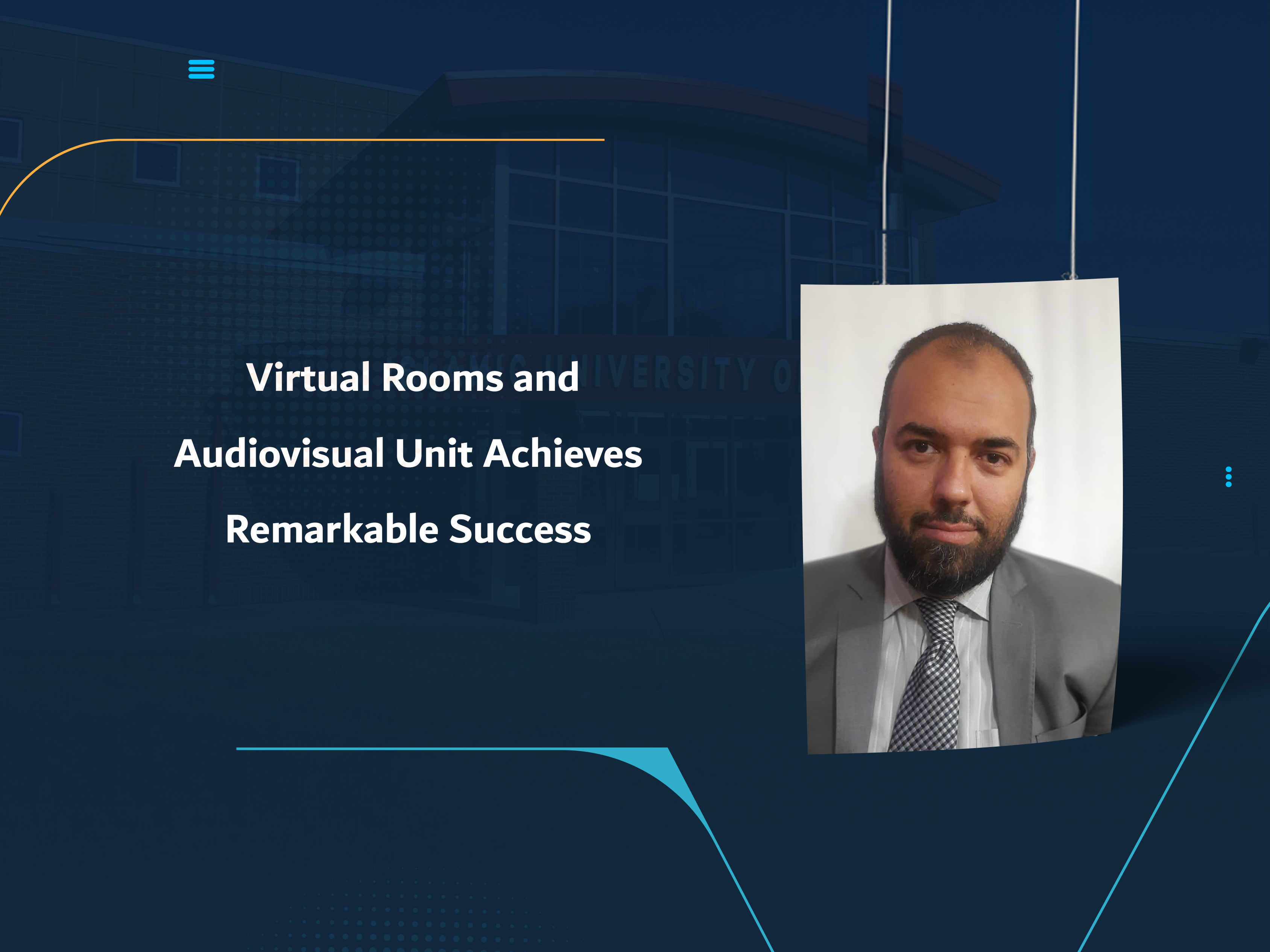Virtual Rooms and Audiovisual Unit Achieves Remarkable Success

A report obtained by "Sada Al-Jamea" newspaper revealed the activities of the Virtual Rooms and Audiovisual Unit during the second semester of the academic year 2024/1445. The report included details about the measures taken by the unit to facilitate the preparation of class schedules and provide access to audiovisual lectures.
The Virtual Rooms unit started preparing class schedules using Google tools, where preliminary schedules were sent to department heads via Google Docs. Links to the schedules were provided on Google Drive to facilitate review and submission by department heads and secretaries. The files were formatted as images or PDFs to enhance accessibility and reduce file redundancy.
Furthermore, the unit utilized playlist links for each department, creating links for visual and audio playlists. A total of 85 links for visual playlists and 85 links for audio playlists were sent to the secretaries. Students and faculty members were able to easily access daily lectures through these links.
In addition, the unit established two groups on the WhatsApp application to receive requests from the secretaries regarding makeup lectures and missed lectures. This service was provided to facilitate communication and meet the needs of students and educational staff.
These new measures implemented by the Virtual Rooms and Audiovisual Unit aim to improve the student experience and facilitate access to study materials and lectures. It is expected that these steps will contribute to enhancing distance education and achieving better integration between students and faculty members.
Based on the obtained report, it is evident that the Virtual Rooms and Audiovisual Unit made significant efforts during the second semester of the academic year 2023/2024. Here are some figures related to the unit's activities during that semester:
Number of primary rooms: 325 rooms.
Number of compensatory and additional rooms: 384 rooms.
Number of required modifications: 220 modifications.
Furthermore, the following numbers were recorded regarding academic and training materials:
Number of visual lecture recordings: 3200 recordings.
Number of audio lecture recordings: 3200 recordings.
Number of attendance sheets files: 3100 files.
Number of training course links: 45 links.
Number of visual course recordings: 28 recordings.
Number of public discussions and seminar session links: 28 links.
Number of public discussions and seminar recordings: 25 recordings.
Number of department, college, and unit meeting links: 35 links.
Number of Language Center links: 25 links for Spanish and English Level 2 courses.
Regarding training and collaborative activities, 7 training workshops were held for secretaries and new college members to explain the professional and practical use of the Zoom program on computers and mobile devices. Extended meetings were also held with the new Dean of Academic Affairs and the Director of the Educational Affairs Unit to arrange joint work. Another meeting was held with college secretaries to clarify the role of the Virtual Rooms Unit in detail.
The report indicates that the Virtual Rooms Unit has started preparing for the upcoming summer semester and has sent preliminary schedules to colleges for lecturer nomination and course scheduling.
The Virtual Rooms team excels in performing multiple tasks and includes the professional manager of the unit, virtual rooms and audiovisual staff, technical support staff, lecture and training recording team, as well as the training and development team. The team works closely with colleges and departments to meet their needs and technical requirements for distance education.
Other tasks performed by the team include:
Developing and maintaining the infrastructure for distance education, including updating necessary software and applications.
Providing technical support to students and faculty members in using the tools and technologies necessary for remote learning.
Recording audio and visual lectures and uploading them to the virtual learning platform.
Organizing training courses and workshops to train faculty members on the use of modern educational technologies.
Monitoring and evaluating the use of virtual educational technologies and providing advice and guidance for improvement.
Overall, the Virtual Rooms and Audiovisual Unit is an essential part of the necessary infrastructure for delivering high-quality distance education. The unit aims to provide an integrated and innovative virtual learning environment that enhances the learning experience for students and enables faculty members to effectively and creatively deliver educational content.


